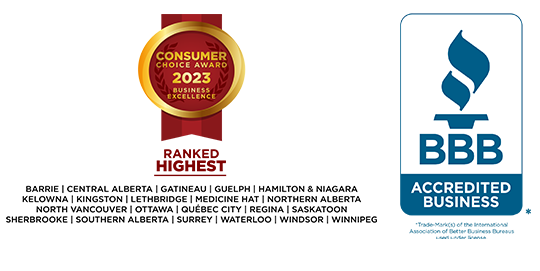Checklist for small business owners and contractors planning to file a Bankruptcy or Proposal
2023-06-14 4 minute read
Checklist for small business owners, contractors, and sole proprietors who are planning to file a Bankruptcy or Proposal
The information below does not replace the advice of a solicitor or accountant.

Are you a small business owner or sole proprietor that has recently made the difficult decision to file a Personal Bankruptcy or Proposal?
After meeting with an MNP Licensed Insolvency Trustee (LIT), you may have decided that a Personal Bankruptcy or Proposal is the best option for you to resolve your debt.
You need to get all your statutory filings up to date whether you plan to continue operating your business or you’re closing it.
Below you will find some tips and links to help you get your taxes and business accounts in order as you prepare to file formal insolvency proceedings.
- You can not be a director of a company while you are in Bankruptcy.
- You must file outstanding returns for corporate and personal income tax, GST, and payroll source deductions.
- You need to close your business accounts if you’re no longer operating your business.
- You need to open a new GST account if you plan to continue operating a business and file a Bankruptcy.
Are you a director of a corporation? You can not be a director of a company while you are in Bankruptcy
There are restrictions under British Columbia laws (other than the Bankruptcy and Insolvency Act) which prohibit your ability to act as a director while you are in Bankruptcy. These laws are the:
- Business Corporations Act
- Societies Act
- If you are a director of a corporation or society, you are required to resign immediately. You can resign as a director of a corporation through your BC Registries and Online Services
- You need your business number, access code, and password. Many directors don’t know these numbers and may need to ask their lawyer / accountant. If they won’t provide it (often because they are owed money), visit the link above to change the address where BC Corporate Registry keeps as the place of record.
- IMPORTANT: Ensure the new address is correct as this is where the information (and access code) will be sent.
- You can change the password and then resign as director once you have the access code.
- To resign as director, you need a credit card (or a debit / Visa), and the charge is $21.00.
- There will be a warning that if a sole director resigns without appointing another director, the company will be in violation. Go ahead and resign.
- Send a copy of the resignation confirmation to our office.
- If you do not resign, you are in contravention of these laws and may be subject to fines and / or penalties. More importantly, you would still be a director and liable for the actions of the company for which a director can be personally liable (GST, source deductions, etc.).
Do you have outstanding tax filings? You must file outstanding returns for income tax, GST, and payroll
- You can file Bankruptcy without having the returns filed prior to your Bankruptcy date but you must provide the information within three months of filing.
- If you are filing a Consumer Proposal, then CRA requires the returns to be filed no later than ten days after your Proposal is registered.
- CRA’s policy allows it to vote against accepting your proposal if all outstanding tax returns are not filed within 10 days of the day you file your proposal. You may wait to file a proposal until you get your information together.
Corporate tax returns (T2)
If you don’t have an accountant, you can file this return yourself using CRA-certified software or by downloading and completing the fillable form and mailing to CRA.
Personal income tax returns (T1) for prior years
If you were self-employed in prior years and haven’t filed your personal income tax returns, you must summarize your self-employment income and expenses on a T2125 for each year you were self-employed and did not file a tax return.
- You can file your tax return using one of the tax software from CRA’s certified tax software list.
- For Bankruptcy, the trustee is only responsible for filing the income tax return for the year prior to your year of Bankruptcy.
- You are responsible for completing and filing income tax returns if you have outstanding returns for more
Provisional and pre-Bankruptcy personal income tax returns
If you owe personal income tax or GST for the period of January 1 of the year in which you file your Proposal or Bankruptcy up to the day you file, the trustee can prepare a tax return for this ‘year-to-date’ period and any liability for this period can be included and forgiven through a Bankruptcy or Proposal.
- The trustee requires the LAST paycheque stub you received before your insolvency date (if the year-to-date information is on the stub)
- You need to summarize your self-employment income and expenses and give them to your trustee if you were self-employed before your insolvency date.
- The trustee will file a tax return with CRA for this provisional, or pre-Bankruptcy period.
- Provisional tax returns in a Proposal are like pre-Bankruptcy income tax returns; however, no legislation states the provisional return must be filed (it is required in a Bankruptcy). Also, no legislation defines a provisional return – it is an agreement that CRA, the OSB, and trustees have created to allow debtors to file proposals to include the year-to-date tax liabilities.
- Provisional returns must be filed within ten days from the day you file your Consumer Proposal. If they are not filed within this period, CRA will not allow you to claim the amount owing for this period as a debt to be compromised in your Proposal.
GST returns
- You must file all outstanding GST returns even if you are no longer operating your corporation.
- As a director, you are personally liable for the GST liability of the corporation. This liability can be included in a Bankruptcy or Proposal, but you must file the outstanding returns.
- You can file your GST returns electronically using the GST Netfile.
- You have to paper file your GST returns using the forms provided to you by CRA if you do not have access to your GST online account.
- You can get a working copy of a GST return here.
Payroll returns
- If you had employees during the year, you must submit your payroll remittance voucher to CRA and you must prepare and file their T4s for the year.
- You can learn more about remitting here.
- You can close your account once you have filed your final payroll returns.
You may have to close a tax account
- You need to close your business accounts if you are no longer operating your business.
- You need to close your business accounts if you are filing Bankruptcy and plan to continue operating as a contractor or sole proprietor.
- You can find the form and learn more about closing your business accounts.
You may need to open a new business account
- You must open a new business account if you are filing Bankruptcy but plan to continue operating as a contractor or sole proprietor.
- You can open a new business account here.
- You do not open a new business account if you are filing a Proposal and you plan to continue operating as a contractor or sole proprietor. You should continue to file GST and payroll remittances using your existing accounts.
Get a Free Confidential Consultation from your local MNP Trustee for more information about debt relief options.

